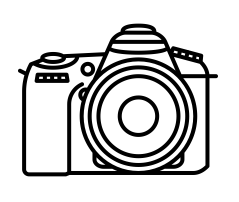So many of the problems facing the world seem to be due to the decisions and choices made by individuals pursuing their own goals, ideals, and priorities without considering other people’s perspectives and needs. It is often said, in not so many words, that “They Fuck You Up, Your Parents.” What, then, should we be making future parents aware of to prevent yet more wars, especially civil wars, famines, far-right attitudes and behaviour, genocides, climate damage and so on?
If we hope to break the cycles of harm, authoritarianism, ecological collapse, and inherited trauma, we must pay more attention to what kind of adults we raise – before they are even born.
Here are key things prospective parents should be made aware of, not as prescriptions, but as deeply ethical considerations:
1. Your child is not your project.
Children are not meant to complete you, fix your past, or fulfil your unmet dreams. Conditional love – based on achievement, obedience, or conformity – breeds fear, not empathy. This is how the seeds of narcissism and fascism are sown: in the soil of unmet needs and displaced shame (Bollas, 1987; Fromm, 1941).
2. Authoritarian parenting breeds authoritarian thinking.
Punitive discipline teaches submission to power, not internal ethics. It also links love to control. This normalises the logic of violence—at home, in politics, and in global affairs (Milgram, 1963; Baumrind, 1991). Children raised in fear do not become free citizens. They become resentful subjects.
3. Perspective-taking is learned at home.
Empathy is not innate – it is cultivated. Children who are encouraged to listen, reflect, and question come to understand that others’ lives and needs are real. This directly counters dehumanisation, which underpins war, racism, and exploitation (Decety & Cowell, 2014).
4. Help your child embrace difference, not fear it.
Prejudice is often learned through silence. When parents avoid naming injustice or reinforce binaries (good/bad, us/them), they raise children who are easily swayed by demagogues. Openness to pluralism and ambiguity can be taught – by how parents handle conflict, sex, race, and power (Allport, 1954).
5. Teach critical thinking, not certainty.
Children must be able to doubt. Rigid beliefs – whether religious, nationalistic, or ideological – are often defences against anxiety. If we want a world with fewer tyrants, we must raise fewer children who crave absolute answers (Kohlberg, 1981; Arendt, 1963).
6. Don’t pass on your trauma unexamined.
The unspoken becomes the script. If a parent has not processed their own wounds, they tend to repeat them in coded form. This intergenerational damage builds systems of disconnection and shame. Healing must begin with awareness and relational accountability (Van der Kolk, 2014; Fivush et al., 2003).
7. Model relationship with the earth, not domination over it.
The logic of colonialism and capitalism begins early: mine, take, consume. Children need to experience the non-human world as alive, not as backdrop or resource. This is the basis for ecological sanity, not just climate policy (Kimmerer, 2013).
8. You are not raising a citizen of your nation, but of the world.
Borders are political inventions. Empathy, cooperation, and solidarity must be modelled across difference. Parents who reinforce national exceptionalism or cultural supremacy raise children who are susceptible to supremacist ideologies and right-wing populism (Appiah, 2006).
References
Allport, G. W. (1954). The nature of prejudice. Addison-Wesley.
Appiah, K. A. (2006). Cosmopolitanism: Ethics in a world of strangers. W. W. Norton & Company.
Arendt, H. (1963). Eichmann in Jerusalem: A report on the banality of evil. Viking Press.
Baumrind, D. (1991). The influence of parenting style on adolescent competence and substance use. Journal of Early Adolescence, 11(1), 56–95. https://doi.org/10.1177/0272431691111004
Bollas, C. (1987). The shadow of the object: Psychoanalysis of the unthought known. Columbia University Press.
Decety, J., & Cowell, J. M. (2014). The complex relation between morality and empathy. Trends in Cognitive Sciences, 18(7), 337–339. https://doi.org/10.1016/j.tics.2014.04.008
Fivush, R., Bohanek, J. G., & Zaman, W. (2003). Personal narratives as tools for identity development: The sociocultural construction of personal past. Memory, 11(2), 173–190. https://doi.org/10.1080/09658210244000316
Fromm, E. (1941). Escape from freedom. Farrar & Rinehart.
Kimmerer, R. W. (2013). Braiding sweetgrass: Indigenous wisdom, scientific knowledge and the teachings of plants. Milkweed Editions.
Kohlberg, L. (1981). The philosophy of moral development: Moral stages and the idea of justice (Vol. 1). Harper & Row.
Milgram, S. (1963). Behavioral study of obedience. Journal of Abnormal and Social Psychology, 67(4), 371–378. https://doi.org/10.1037/h0040525
Van der Kolk, B. (2014). The body keeps the score: Brain, mind, and body in the healing of trauma. Viking.





